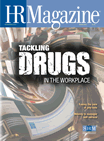Controversy over drug testing remains. The U.S. Department of Health and Human Services recommends that employers follow these rules to ensure fairness and avoid lawsuits.
Do
-
Identify and comply with relevant federal or state laws.
-
If applicable, talk with union officials.
-
Identify and contact a U.S. Department of Health and Human Services-certified laboratory and a medical review officer.
-
Develop a system to protect the confidentiality of employee drug-testing records.
-
Designate a person at your workplace who will receive the test results from the lab and keep them confidential.
-
Notify employees 30 to 60 days before the drug-testing program goes into effect.
-
Abide by any policies communicated to employees.
Don’t
-
Enforce a workplace policy inconsistently. An inconsistent policy is unfair and makes an employer a target for litigation.
-
Publicize drug-test results. Disseminate employee or job applicant test results only to those who need to know.
-
Take action if only an initial positive drug-test result is available. A confirmatory test must always be conducted on specimens that had initial positive drug-test results.
-
Use unaccredited laboratories.
-
Address drug abuse without addressing alcohol abuse. Make the dangers of abusing alcohol part of the drug abuse education program you offer employees.
-
Confront a suspected drug user alone. Confronting a person under the influence or engaged in illegal behavior could be physically dangerous. In the event of legal challenge, it helps to have a witness.
-
Allow impaired employees to drive home. Have a supervisor drive them.
Advertisement
An organization run by AI is not a futuristic concept. Such technology is already a part of many workplaces and will continue to shape the labor market and HR. Here's how employers and employees can successfully manage generative AI and other AI-powered systems.
Advertisement



